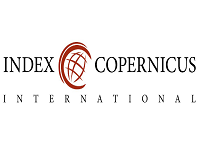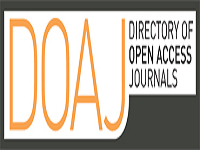Employee Perceptions of Management Practices and Engagement
Keywords:
Work Environment, Work Commitment, Employee Engagement, Relationships Between Co-workersAbstract
The employer-employee relationship has continuously been administered by the understanding that the representative is essentially a contracted hand to complement the trade proprietor within the prepare of accomplishing a firm's set goals. The manager drives the worker to perform to enable the firm to realize its destinations and donate a great return on the speculations. The rest of the other exercises is just a implies to the conclusion, caught on to be only a advantageous relationship, one hand washing the other. This paper brings into light experimental investigate showing that industry captains don't center on human capital as basic for compelling efficiency. The supervisor resort to hiring and terminating as a implies of expanding efficiency, driving slaves to extend labor execution. The industry captains are fast to point a finger to the labor as hindering free will contracting and terminating as a arrangement to destitute efficiency. As a result, the industry may be breeding a era of non-devoted, comfortable representatives coming about in fair execution. The paper focuses the issue to the disappointment of administration to capitalize on the benefits of employee-engagement as an extra to compelling
Downloads
References
1. Altheeb, S. A. (2020). Leadership Style and Employee Motivation: A Study of Saudi Arabian Work Environment. Journal of Educational Psychology-Propositos y Representaciones, 8.
2. Amah, E., & Ahiauzu, A. (2013). Employee involvement and organizational effectiveness. Journal of Management Development, 32(7), 661-674.
3. Azeem, M., Ahmed, M., Haider, S., & Sajjad, M. (2021). Expanding competitive advantage through organizational culture, knowledge sharing and organizational innovation. Technology in Society, 66, 101635.
4. Bakker, A. B. (2011). An evidence-based model of work engagement. Current directions in psychological science, 20(4), 265-269.
5. Baran, M., & Sypniewska, B. (2020). The impact of management methods on employee engagement. Sustainability, 12(1), 426.
6. Batool, S. S., & Ghayas, S. (2020). Process of career identity formation among adolescents: components and factors. Heliyon, 6(9).
7. Berwal, R. (2020). Global aspect of Indian textile industry and their challenges and opportunities: A review. International Journal of Home Science. 6(1): 292-297.
8. Boxall, P., & Winterton, J. (2018). Which conditions foster high-involvement work processes? A synthesis of the literature and agenda for research. Economic and industrial democracy, 39(1), 27-47.
9. Burnett, J. R., & Lisk, T. C. (2021). The future of employee engagement: Real-time monitoring and digital tools for engaging a workforce. In International Perspectives on Employee Engagement (pp. 117-128). Routledge.
10. Carmeli, A., & Tishler, A. (2004). The relationships between intangible organizational elements and organizational performance. Strategic management journal, 25(13), 1257-1278.
11. Chary, M. T. (2009). India: Nation on the Move: An Overview of India's People, Culture, History, Economy, IT Industry, & More.
12. De Neve, G. (2014). Fordism, flexible specialization and CSR: How Indian garment workers critique neoliberal labour regimes. Ethnography, 15(2), 184-207.
13. De Neve, G. (2014). Entrapped entrepreneurship: Labour contractors in the South Indian garment industry. Modern Asian Studies, 48(5), 1302-1333.
14. Ernest, A. (2021). Discipline and achievement of organizational objectives. International Journal of Institutional Leadership, Policy and Management, 3(3), 471-489.
15. Gabriel, A. G., Alcantara, G. M., & Alvarez, J. D. (2020). How do millennial managers lead older employees? The Philippine workplace experiences. Sage Open, 10(1), 2158244020914651.
16. Gautam, S., & Lal, M. (2020). Analysing competitiveness and trade performance: evidence from Indian textile industry and its select competitors. Transnational Corporations Review, 12(4), 406-424.
17. Gold, A. H., Malhotra, A., & Segars, A. H. (2001). Knowledge management: An organizational capabilities perspective. Journal of management information systems, 18(1), 185-214.
18. Grego-Planer, D. (2022). The relationship between benevolent leadership and affective commitment from an employee perspective. Plos one, 17(3), e0264142.
19. Gupta, N., & Sharma, V. (2016). Exploring employee engagement—A way to better business performance. Global Business Review, 17(3_suppl), 45S-63S.
20. Indumathy, R. (2012). A study on quality of work life among workers with special reference to textile industry in Tirupur district-A textile hub. Journal of Contemporary Management Research, 6(1), 78.
21. Jaiswal, A. (2012). Ethnographic Profile of the Textile Workers of Uttar Pradesh. The Anthropologist, 14(3), 231-237.
22. Kahreh, M. S., Ahmadi, H., & Hashemi, A. (2011). Achieving competitive advantage through empowering employees: An empirical study. Far East Journal of Psychology and Business, 3(2), 26-37.
23. Kalogiannidis, S. (2020). Impact of effective business communication on employee performance. European Journal of Business and Management Research, 5(6).
24. Karanika-Murray, M., Duncan, N., Pontes, H. M., & Griffiths, M. D. (2015). Organizational identification, work engagement, and job satisfaction. Journal of Managerial Psychology, 30(8), 1019-1033.
25. Karuppiah, K., Sankaranarayanan, B., Ali, S. M., & Kabir, G. (2020). Role of ergonomic factors affecting production of leather garment-based SMEs of India: Implications for social sustainability. Symmetry, 12(9), 1414.
26. Kahn, W. A. (1990). Psychological conditions of personal engagement and disengagement at work. Academy of management journal, 33(4), 692-724.
27. Khan, W. U., Ahmed, S., Dhoble, Y., & Madhav, S. (2023). A critical review of hazardous waste generation from textile industries and associated ecological impacts. Journal of the Indian Chemical Society, 100(1), 100829.
28. Khadria, B. (2006). India: Skilled migration to developed countries, labour migration to the Gulf. Migración y desarrollo, (7), 4-37.
29. Khan, A., & Arokkiaraj, H. (2021). Challenges of reverse migration in India: a comparative study of internal and international migrant workers in the post-COVID economy. Comparative Migration Studies, 9(1), 49.
30. Khurana, K. (2022). The Indian fashion and textile sector in and post COVID-19 times. Fashion and Textiles, 9(1), 15.
31. Kumar, V., & Pansari, A. (2016). Competitive advantage through engagement. Journal of marketing research, 53(4), 497-514.
32. Kumar, S. (2014). Empowerment or exploitation: the case of women employment system in India's textile and clothing industry. Emerald Emerging Markets Case Studies, 4(8), 1-10.
33. Latham, G. P. (2023). Motivate employee performance through goal setting. Principles of Organizational Behavior: The Handbook of Evidence‐Based Management 3rd Edition, 83-111.
34. Lei, D., Slocum, J. W., & Pitts, R. A. (1999). Designing organizations for competitive advantage: the power of unlearning and learning. Organizational dynamics, 27(3), 24-38.
35. Mahabeer, M., & Govender, P. (2013). Employee involvement: A tool for work team effectiveness. Corporate Ownership & Control, 10(2), 241.
36. Malik, A. (2019). Creating competitive advantage through source basic capital strategic humanity in the industrial age 4.0. International Research Journal of Advanced Engineering and Science, 4(1), 209-215.
37. Manickam, P., & Vijay, D. (2021). Chemical hazards in textiles. In Chemical management in textiles and fashion (pp. 19-52). Woodhead Publishing.
38. Markos, S., & Sridevi, M. S. (2010). Employee engagement: The key to improving performance. International journal of business and management, 5(12), 89.
39. Memon, H., Ranathunga, G. M., Karunaratne, V. M., Wijayapala, S., & Niles, N. (2022). Sustainable textiles in the past “wisdom of the past: Inherited weaving techniques are the pillars of sustainability in the handloom textile sector of Sri Lanka”. Sustainability, 14(15), 9439.
40. Muthuveloo, R., Shanmugam, N., & Teoh, A. P. (2017). The impact of tacit knowledge management on organizational performance: Evidence from Malaysia. Asia Pacific Management Review, 22(4), 192-201.
41. Nasifoglu Elidemir, S., Ozturen, A., & Bayighomog, S. W. (2020). Innovative behaviors, employee creativity, and sustainable competitive advantage: A moderated mediation. Sustainability, 12(8), 3295.
42. Panigrahi, C. M. A., Ashutosh, K., Mehta, S., & Pasricha, S. (2020). Impact of coronavirus outbreak on Indian textile sector. Journal of Management Research and Analysis, 7(2), 76-83.
43. Pathiranage, Y. L., Jayatilake, L. V., & Abeysekera, R. (2020). A Literature Review on Organizational Culture towards Corporate Performance. International Journal of Management, Accounting & Economics, 7(9).
44. Prakash, Y., Charwak, B., & Kumar, P. V. (2020). Textile industry in new India: challenges and opportunities. International Journal of Indian Culture and Business Management, 21(4), 435-458.
45. Randhawa, K., Wilden, R., & Gudergan, S. (2021). How to innovate toward an ambidextrous business model? The role of dynamic capabilities and market orientation. Journal of Business Research, 130, 618-634.
46. Romar, E. J. (2004). Managerial harmony: the Confucian ethics of Peter F. Drucker. Journal of Business Ethics, 51, 199-210.
47. Saks, A. M. (2022). Caring human resources management and employee engagement. Human resource management review, 32(3), 100835.
48. Sardžoska, E. G., & Tang, T. L. P. (2012). Work-related behavioral intentions in Macedonia: Coping strategies, work environment, love of money, job satisfaction, and demographic variables. Journal of Business Ethics, 108, 373-391.
49. Schaufeli, W. (2021). Engaging leadership: How to promote work engagement?. Frontiers in psychology, 12, 754556.
50. Sharma, A. K., & Rai, S. K. (2024). COVID-19 and Sectoral Employment in India: Impact and Implications. The Indian Journal of Labour Economics, 1-20.
51. Singh, R. (2016). Exploring the drivers of employee engagement: A literature review. International Journal of Education and Management Studies, 6(1), 105.
52. Srivastava, D. S. (2020). Role of MSME Sector in Indian Economy: A Study with special reference to Gujarat. Pacific Business Review International, 13(3).
53. Sun, H., Kee Hui, I., Tam, A. Y., & Frick, J. (2000). Employee involvement and quality management. The TQM Magazine, 12(5), 350-354.
54. Tewari, M. (2001). The challenge of reform: how Tamil Nadu’s textile and apparel industry is facing the pressures of liberalization. Cambridge, The Center for International Development, Harvard University.
55. Tortorella, G., Miorando, R., Caiado, R., Nascimento, D., & Portioli Staudacher, A. (2021). The mediating effect of employees’ involvement on the relationship between Industry 4.0 and operational performance improvement. Total Quality Management & Business Excellence, 32(1-2), 119-133.
56. Weissenberg, P., & Gruenfeld, L. W. (1968). Relationship between job satisfaction and job involvement. Journal of Applied psychology, 52(6p1), 469.
57. Wood, S. (1999). Human resource management and performance. International journal of management reviews, 1(4), 367-413.
58. Yuan, D., Gazi, M. A. I., Rahman, M. A., Dhar, B. K., & Rahaman, M. A. (2022). Occupational stress and health risk of employees working in the garments sector of Bangladesh: An empirical study. Frontiers in public health, 10, 938248



 .
.









